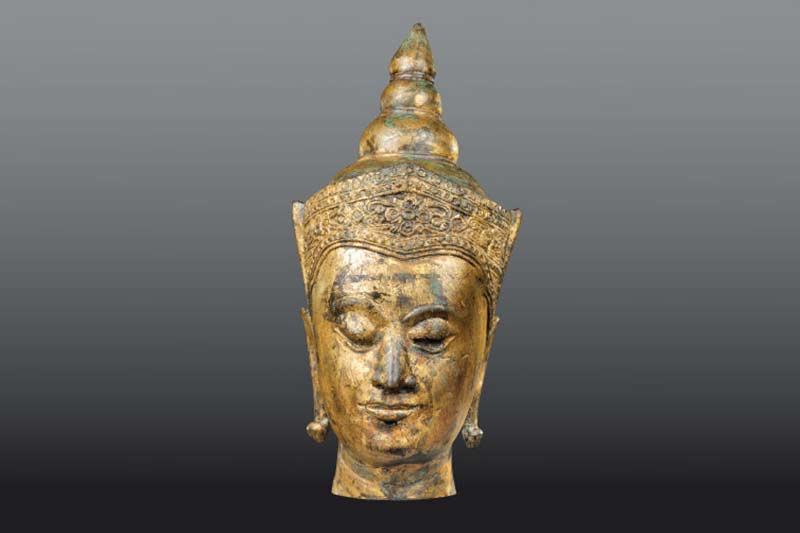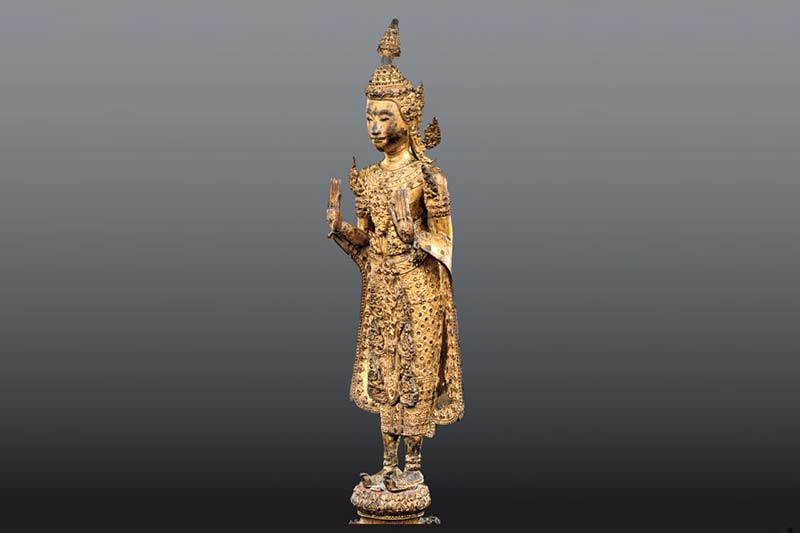The art of Siam
South East Asian Art Collection
Siam (Thailand) has been one of the most significant centres for the Buddhist religion. The Theravada Buddhism (The Way of the Elders) spread to Siam from India and there it was enriched by the local religion, which was based in the deification of nature and the worship of the ancestors.
Sculptures become different as they follow the styles of each era’s political and cultural centres. From the 6th until the 10th century AD, in the Dvaravati kingdom art draws its inspiration from India. From the 10th until the 13th century, the city of Lopburi is culturally dominant and art is influenced by the Cambodian Khmer who penetrate central Siam. The Khmer art tradition also influences the U Thong style (12th-15th century AD).
From the 13th until the 18th century we have the exclusively Thai period, with the establishment of the first Thai tribe kingdoms; the most significant ones are the Sukothai, the Lan Na, the Ayuthaya etc. while from the 18ht century onward we have the Bangkok or Ratanakosin period. From the 13th century on, Buddha is depicted in a particularly elegant, slim form and a tall, flame-shaped appendix on the head (symbol of wisdom), resulting in these sculptures being different than all other Asian ones.
BUDDHA HEAD

STANDING BUDDHA


